
In the 1960s, racing teams began replacing drum brakes with disc brakes to more effectively slow down heavy, high-speed race cars. With the increased line pressure requirements of the disc brakes, the flexible synthetic rubber and reinforced multi-layer fabric braided brake lines started swelling under heavy braking. This resulted in a soft, low brake pedal and a minimal pedal reserve distance (from the floor).
To fix this problem, Earl’s Performance Plumbing originated the flex hose design with extruded Teflon®. The Teflon® liner’s stiffness in combination with an outer core of tightly woven high-tensile stainless-steel braiding resolved the brake line swelling concerns. With the increased flexible brake line integrity, the brake pedal remained firm with an adequate reserve distance. Drivers could modulate the brakes more effectively for better vehicle control.
Earl’s has continued to innovate automotive plumbing components, now under the Holley corporate umbrella. Earl’s newest product is the Speed-Flex™ hose, which features synthetic rubber or extruded polytetrafluoroethylene (PTFE) wrapped in a casing of braided stainless-steel. The Speed-Flex™ hose provides excellent abrasion resistance and increases temperature capability. The hose can handle pressures up to 4,000 PSIG.
The Speed-Flex™ hoses are available in standard lengths of 10-, 20-, or 33-feet. If those dimensions are too long, custom continuous measurements are obtainable from Earl’s. For extreme lengths, Earl’s offers the hoses in bulk lots. The hoses come in sizes of -2AN and -3AN for small hydraulic circuits such as brake lines. For larger lubrication systems, the hoses are available in -4AN to -10AN. The letters AN are an abbreviation for Army Navy. The AN measurement, outside diameter (OD), is based on 16, so a -8 is ½-inch (8/16), and a -6 is a 3/8-inch (6/16).
The Speed-Flex™ hoses come with two outer material options. The first exterior option is the bare braided stainless steel. If additional protection is desired, the bare braided stainless steel comes coated with a polyvinyl chloride (PVC) barrier. The PVC comes in clear, black, or smoke colors depending upon the hose diameter. All of the hoses are compatible and work safely with automatic transmission fluid, diesel, methanol/ethanol, race gasoline, pump gasoline, nitromethane, bio-fuels, brake fluid, coolant, E85, and engine oil (including synthetic liquids).
The Teflon® liner wall thickness of the Speed-Flex™ hoses is the thickest of all the hose manufacturers at 0.040-inches (other manufacturers use 0.030-inches). The exception is the Earl’s -10AN hose that uses the 0.030-inch wall thickness. After extensive testing, Earl’s has proven the 0.030-inch wall thickness is more than sufficient for a hose of this size. If there are concerns with static electricity buildup, the -6AN, -8AN, and -10AN hose sizes have a carbon liner option.
The Earl’s Speed-Seal™ hose ends function with the 0.040-inch liner thickness of the Speed-Flex™ hose. The construction of the hose ends consists of aluminum, stainless steel, or steel, and all the hose ends require the properly sized brass olive hose-end insert. The finish of each Speed-Seal™ hose end can be ordered in anodized black, anodized blue, anodized red/blue, natural or nickel-plating. The hose ends come in a multitude of angles, and many of the fittings provide infinite adjustments (indexed) to connect two points without the hose becoming twisted.
A few tools are necessary to assemble the hoses. First, a band saw or pneumatic cutoff wheel will properly cut the hose; do not use a hack saw or high-strength cutting pliers. To minimize any possible damage to the hose’s braiding or the liner from heat, cut the hose at a 90° angle and as swiftly as possible. If the hose is PVC coated, a utility knife is necessary.
Trimming the PVC coating back about the length of the hose end (one to two inches) provides enough clearance to install the hose end. To complete the hose assembly requires a vice, an Earl’s reaming tool (cleans and smooths the fluid transition area across the olive insert), Earl’s assembly oil, and an appropriately sized wrench. Earl’s recommends the use of a pressure check kit to clean out and pressure test each new hose.
For more information about the Earl’s Speed-Flex™ hoses and Speed-Seal™ hose ends or any of their performance plumbing products, check out their website and their vast video library accessible on YouTube.









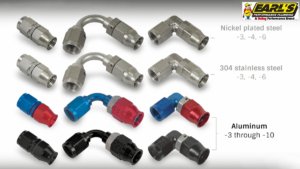
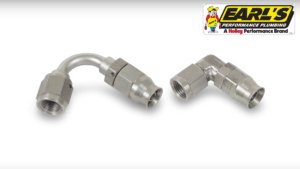
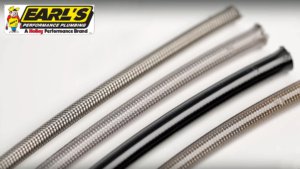
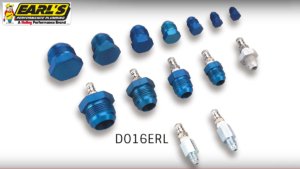



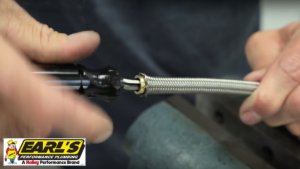
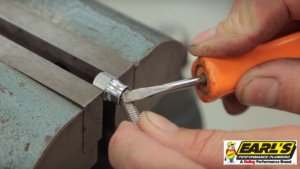
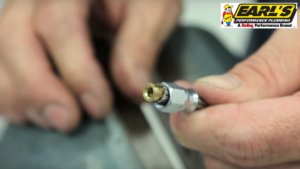
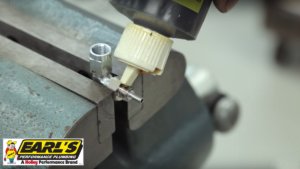

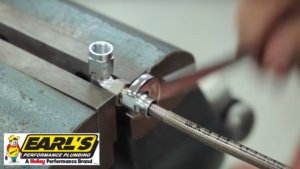
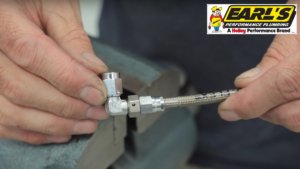

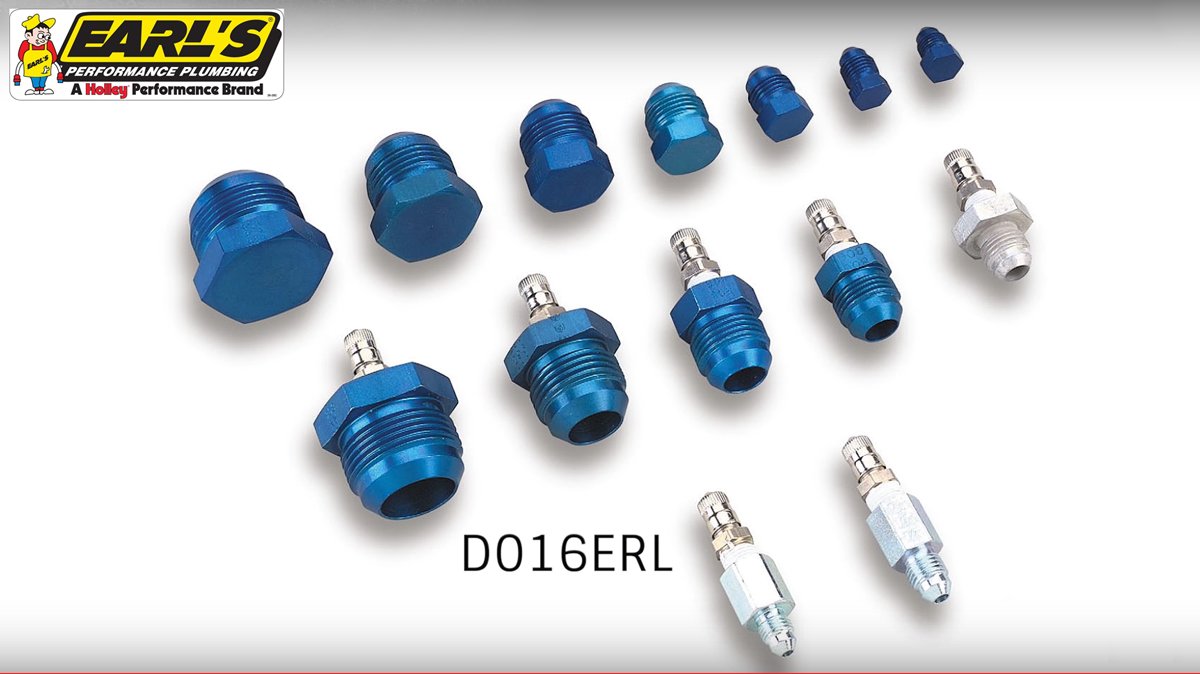

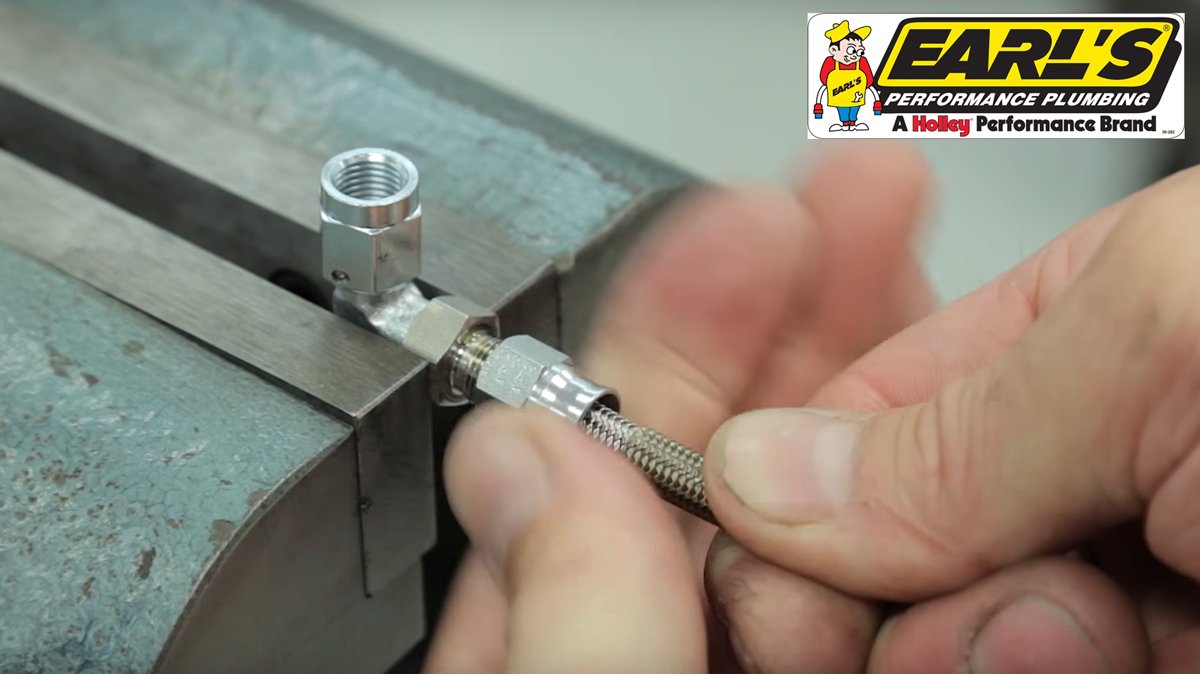

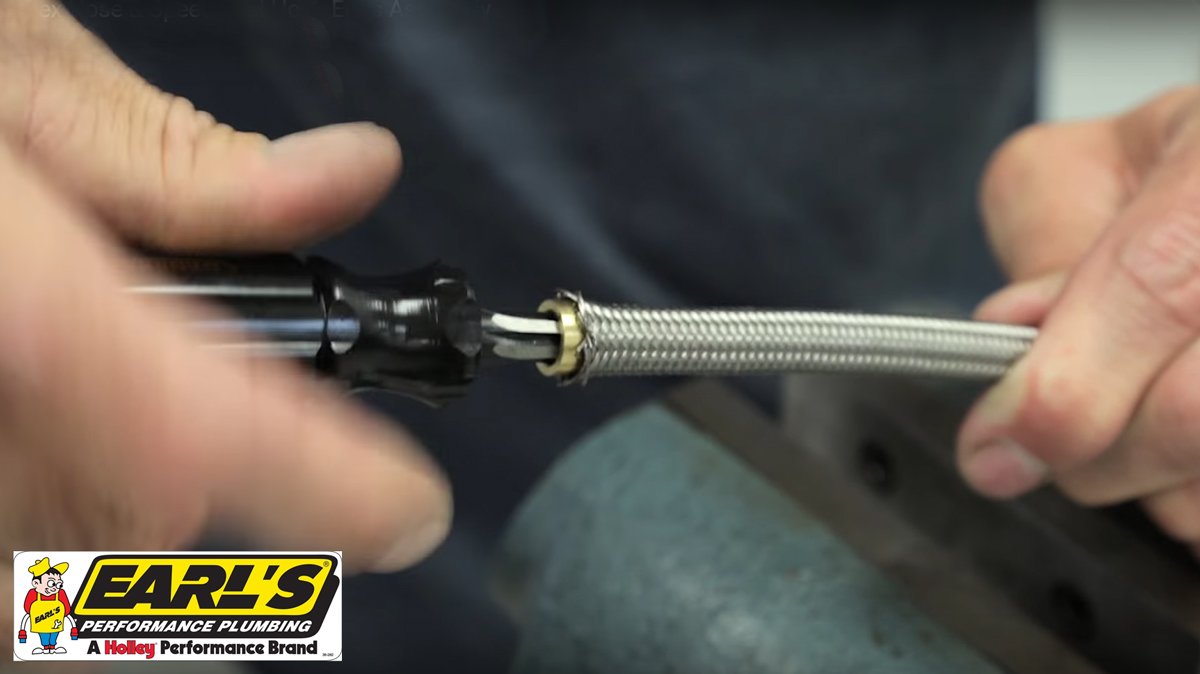
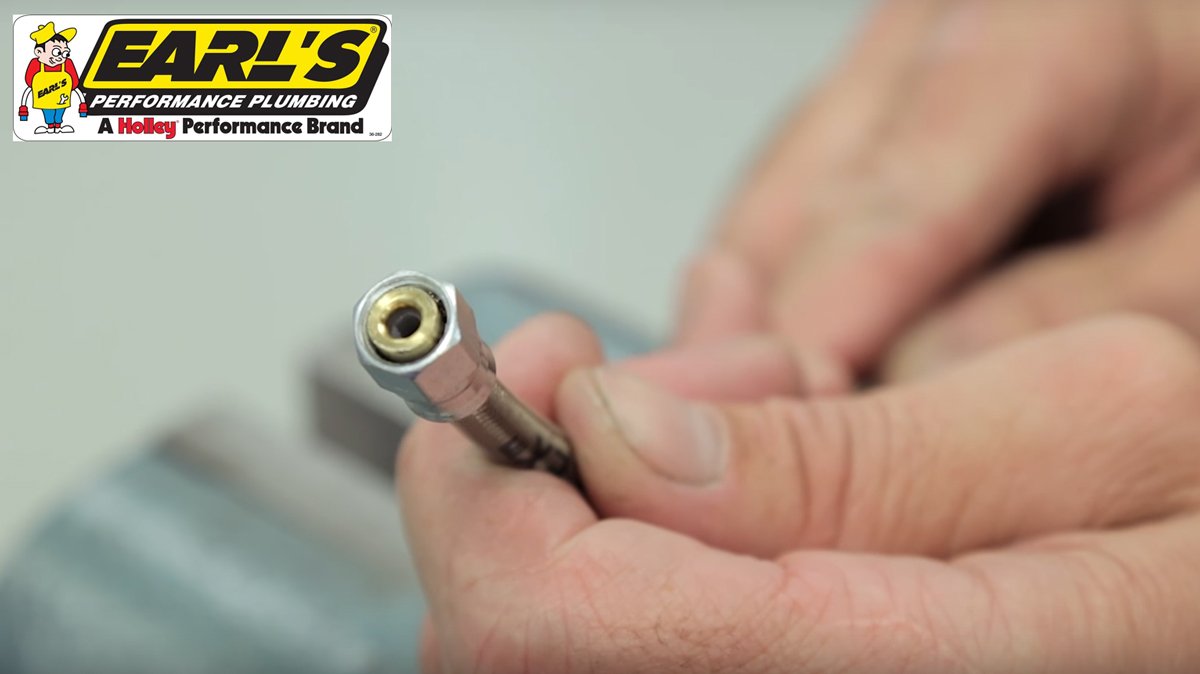
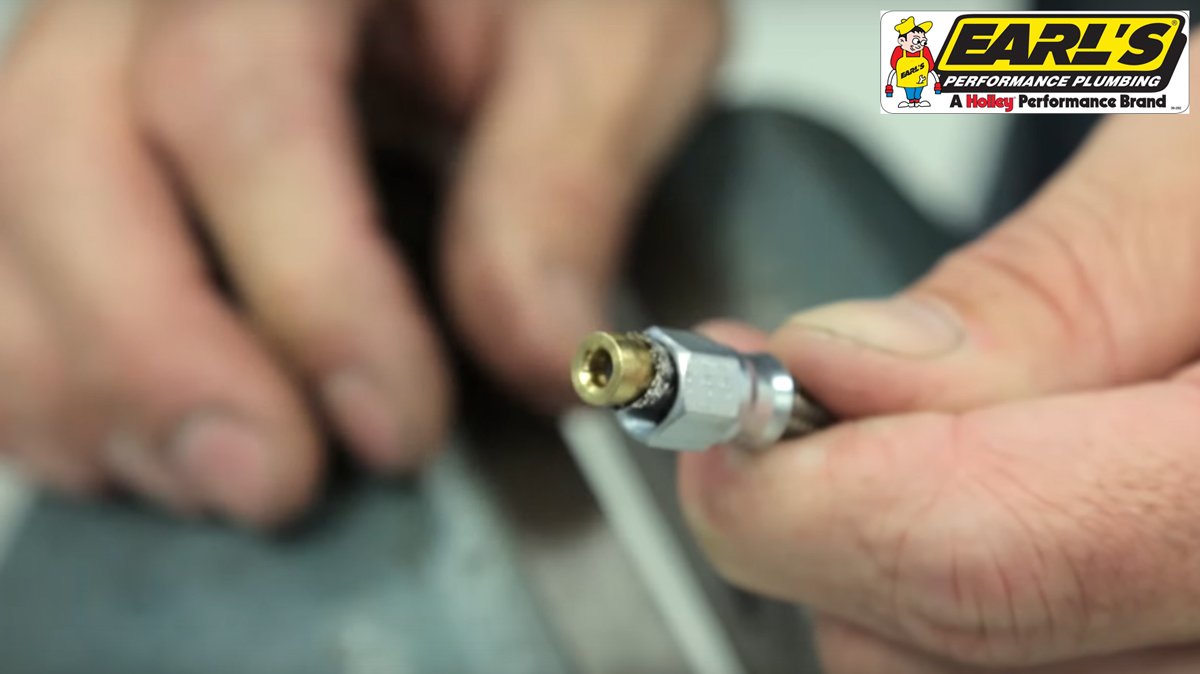
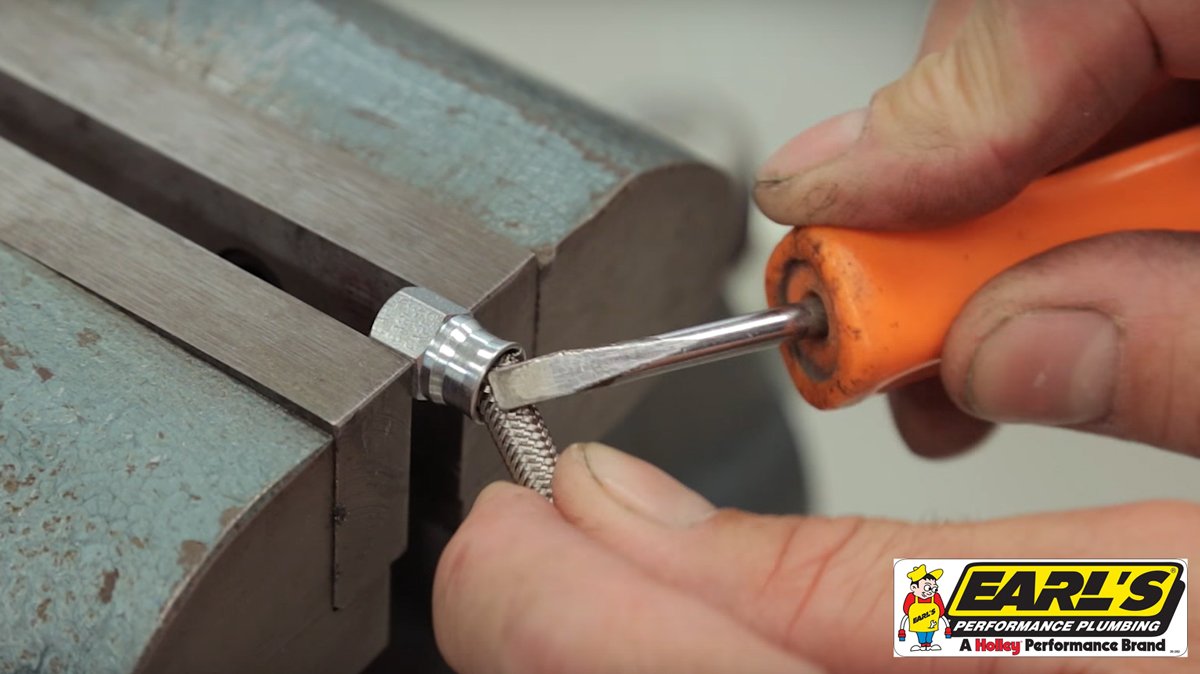
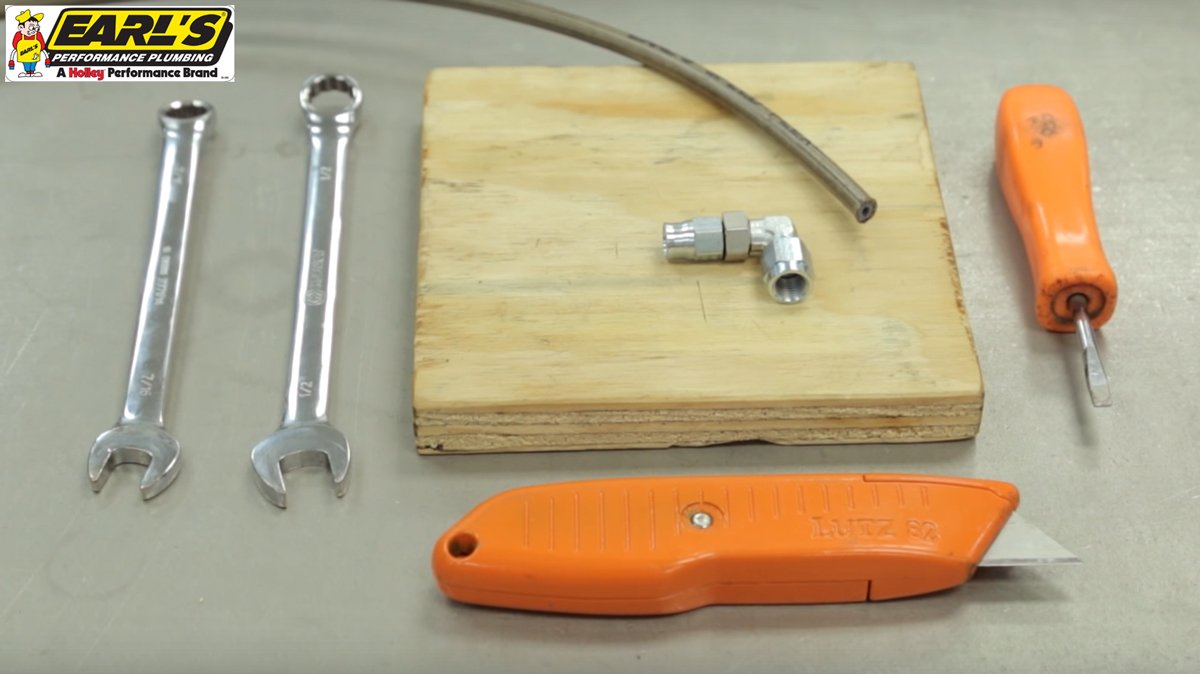
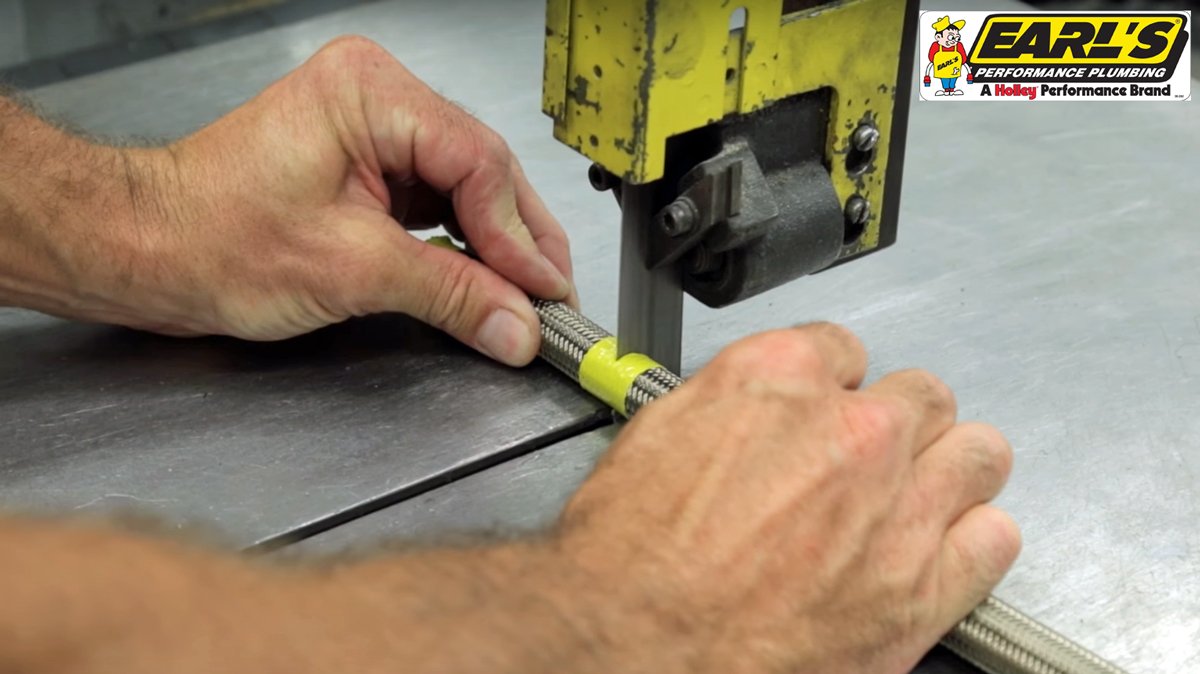
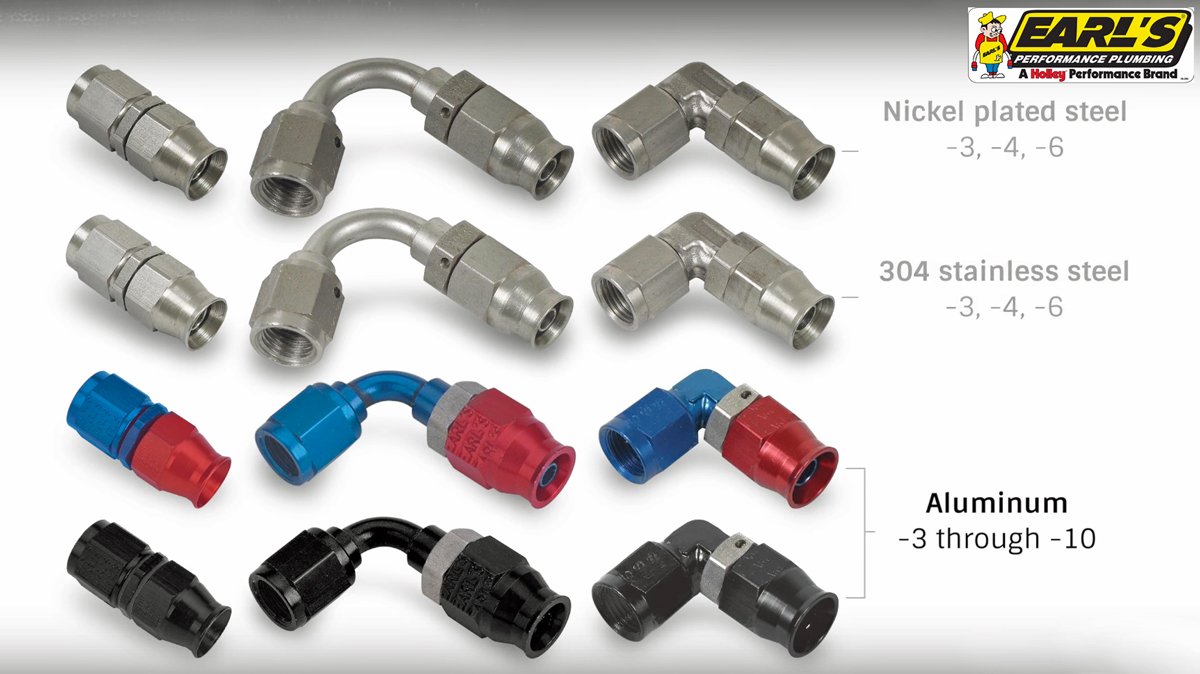


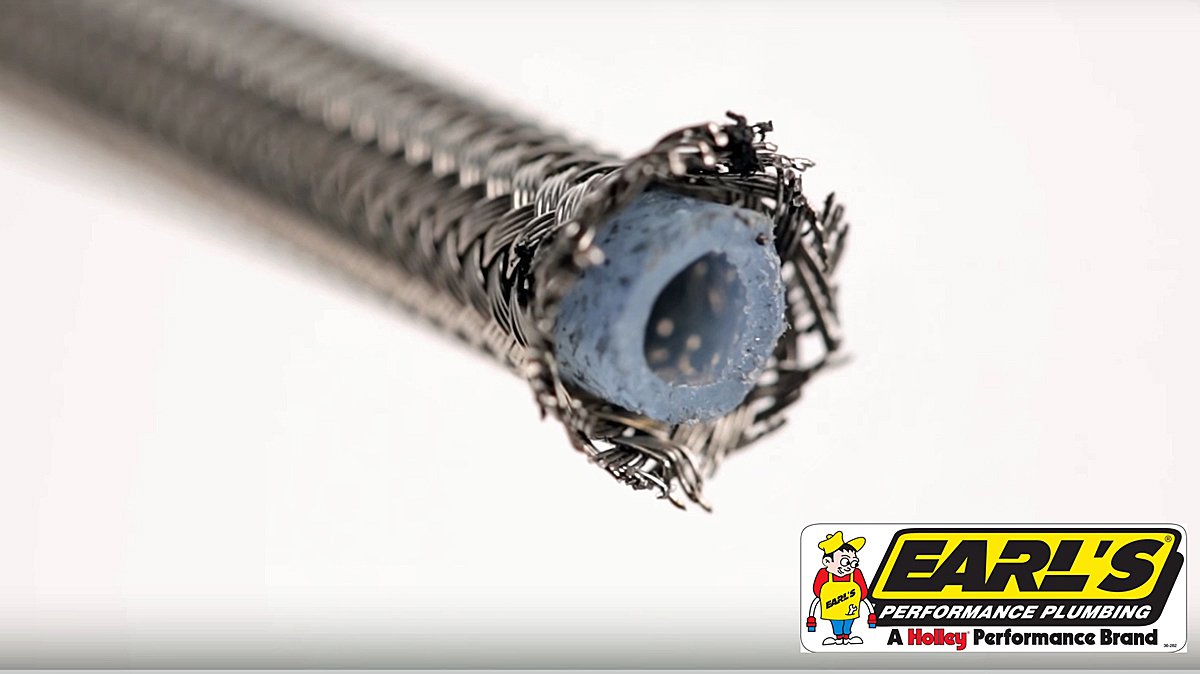




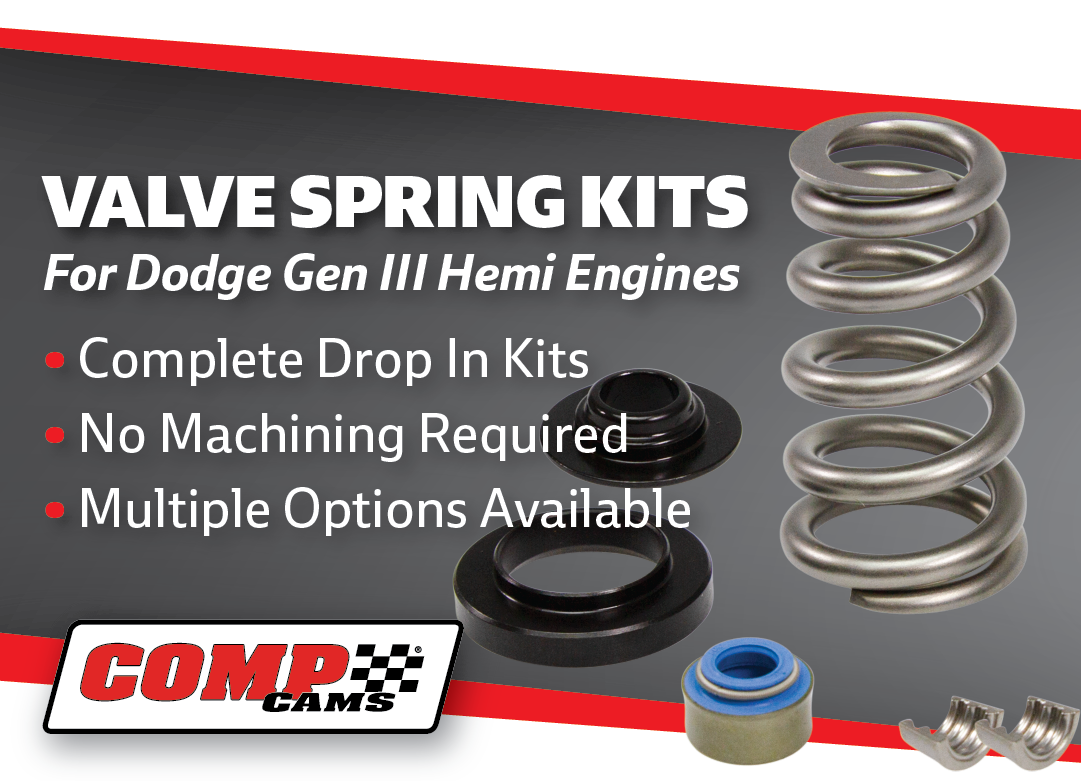
 Mopar Connection Magazine – The ONLY Daily Mopar Magazine © 2022. All Rights Reserved. Mopar Connection Magazine is the ONLY daily Mopar Magazine bringing you the latest Mopar news, technology, breaking news, and Mopar related events and articles. Find out the latest information about Mopar, Mopar products and services, stay up to date on Mopar enthusiast news, dealership information and the latest Mopar social media buzz! Sign up for the Mopar Connection Magazine newsletter for the latest information about new products, services and industry chatter. Mopar Connection Magazine is the best and only source you need to be a Mopar industry insider!
Mopar Connection Magazine – The ONLY Daily Mopar Magazine © 2022. All Rights Reserved. Mopar Connection Magazine is the ONLY daily Mopar Magazine bringing you the latest Mopar news, technology, breaking news, and Mopar related events and articles. Find out the latest information about Mopar, Mopar products and services, stay up to date on Mopar enthusiast news, dealership information and the latest Mopar social media buzz! Sign up for the Mopar Connection Magazine newsletter for the latest information about new products, services and industry chatter. Mopar Connection Magazine is the best and only source you need to be a Mopar industry insider! by
by